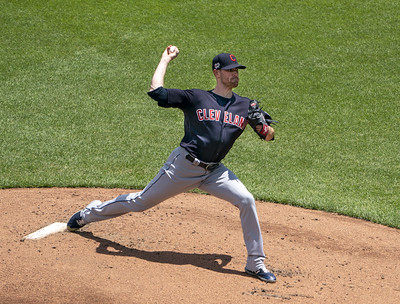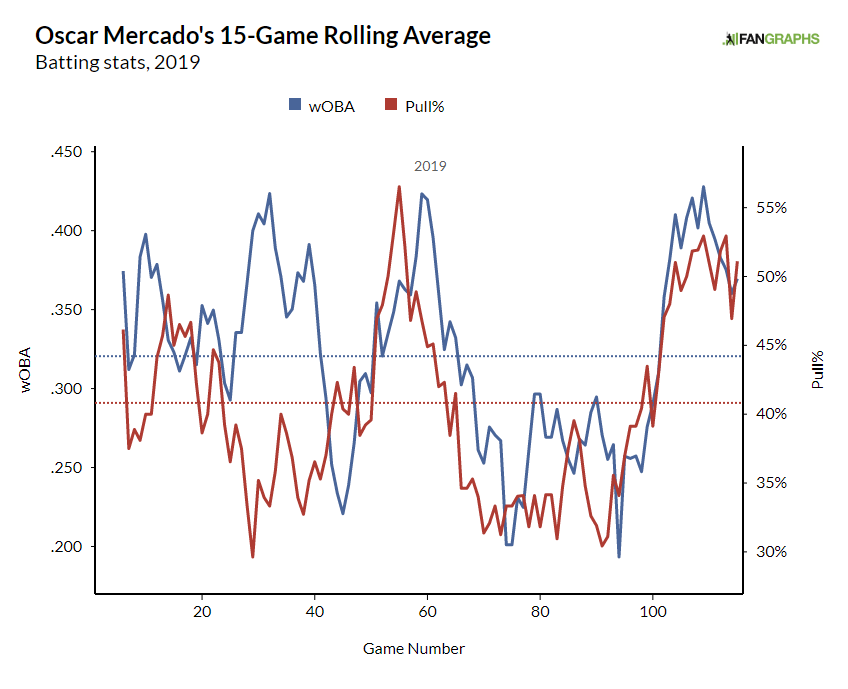Please note, this posting contains two positions.
Position: Front End Developer, Baseball Operations
Location: Cleveland, Ohio
Primary Purpose:
The Front End Developer will focus on building applications and systems to support Cleveland’s players, coaches, and front office. The position will collaborate with Baseball Operations personnel, along with colleagues and peers in Information Systems, to rapidly deliver working software, from ideation to delivery, break/fix, and everything in between.
This role will report to the Manager, Front End Development in Cleveland’s Information Systems department.
Essential Duties & Responsibilities:
Design and Development of Baseball Systems
- Work closely with Baseball Operations and Information Systems departments to design, develop, and improve new and existing baseball applications
- Create tests and documentation for bug fixes and new application features/functions
- Design and develop dashboards and various analytical tools to directly support front office and field personnel
- Ensure technical feasibility of user interface and user experience designs
- Build and/or support mobile-friendly user interfaces and experiences
- Build and/or support web services and business-layer applications that speak to both back end databases and front–end interfaces
- Collaborate with other teammates and stakeholders
Support of Baseball Systems
- Provide development support and guidance to Baseball Operations power users and general support to all Baseball Ops front-office and field personnel, as needed
- Examine and where appropriate, prototype new technologies in the pursuit of creating competitive advantages through software, applications and tools; considers future requirements and possibilities
- Work closely with Data Architects and Infrastructure/Operations resources on the Information Systems team to ensure secure, scalable and high-performing applications
Education and Experience Requirements:
- Bachelor’s Degree in Computer Science, Computer Engineering, or a related field is preferred
- At least 3 years of experience in software development in a web-based development environment
- Experience in consuming Service Oriented Architectures is preferred
- Knowledge of Web Development languages/standards, including Javascript, HTML5, and responsive design Use of Open Source JavaScript libraries such as JQuery and Vue
- Experience with Tableau a plus Experience with Node.js a plus
- Experience working with baseball data or delivering sports analysis tools and/or applications is a plus
- Extensive general knowledge and experience with computer system hardware, networks, operating systems and business applications software
- Knowledge of Microsoft SQL server database design, programming and access methods is a plus
Job Requirements:
- Excellent analytical and problem-solving skills
- Highly self-motivated
- Ability to work extended hours and weekends as necessary.
Standard Requirements:
- Reads, speaks, comprehends and communicates English effectively in all communications.
- Represents the Cleveland Indians in a positive fashion to all business partners and the general public.
- Ability to develop and maintain successful working relationship with members of the Front Office.
- Ability to act according to the organizational values and service excellence at all times.
- Ability to work with multicultural populations and have a commitment to fairness and equality.
- Ability to walk, sit or stand for an entire shift.
- Ability to work extended days and hours, including holidays and weekends.
- Ability to move throughout all areas and levels of the Ballpark.
- Ability to work in a diverse and changing environment.
- Occasional physical activity such as lifting and carrying boxes up to 25lbs.
To Apply:
To apply, please complete the application, which can be found here.
Position: Back End Developer, Baseball Operations
Location: Cleveland, Ohio
Primary Purpose:
To design, implement, manage, and troubleshoot the Baseball Department’s information architecture, and to expose that data to UI developers through a web service layer or direct SQL. The Back-End Developer will partner with the Baseball Analytics and Software Development teams to maintain data infrastructure, support needs, implement solutions, and drive innovation in baseball’s data-driven decision process. Key functions will include data modeling, integration, warehousing, and consumption, as well as the development and maintenance of web services in C# that expose data through REST web services.
This role will report to Manager, Back End Development in Cleveland’s Information Systems department.
Essential Duties & Responsibilities:
Work with the baseball department and software development team to design, develop, test and deploy new functionality, applications, and systems.
Data Consumption
- Support data and reporting requirements for a variety of applications, analysts, and end-users in all departments.
- Provide technical and strategic advice of the management in the creation and implementation of new data standards, databases, products, and vendors.
Data Integration
- Create and support ETL (extract, transform, load) data integration processes.
- Understand the format, definitions, limitations, and content of external and internal data feeds.
- Reconcile differences across data sources and consolidate into a single master repository.
- Develop processes ensuring data standards, security, stewardship, lineage, and metadata management.
- Spearhead efforts to identify, obtain and integrate new data sources useful for decision-making
Data Modeling
- Understand and document existing database structures, historical design decisions, business rules, and future requirements.
- Develop and document a comprehensive information model that describes the data and maps the workflow that transform and manipulates it into usable information.
- Ensure “single version of the truth” consistency across applications and reports.
Data Warehousing
- Manage a data warehouse to support reporting and analytics.
- Assist end users in extracting data for their purposes
Web Services Development
- Creating and supporting REST-based web services to expose data to various UI layers (web, desktop, mobile app).
Education & Experience Requirements:
- Bachelor’s degree in Computer Science, Information Systems, Computer Engineering or related field.
- At least 3 years of experience in software development or in a similar role
- Experience with business intelligence, data warehousing, OLAP, and/or data integration.
- Experience with data modeling.
- Thorough knowledge of design and integration principles for complex, heterogeneous databases
- Advanced knowledge in query development, including SQL, MDX, and stored procedures.
- Experience with ETL and BI reporting tools (e.g. Microsoft SSIS & SSRS, Tableau).
- Experience using JSON formatted data.
- Experience in C# or other .NET language.
- Knowledgeable about software development best practices and long-term maintainability of code
- Familiarity with baseball data and sabermetrics strongly desirable.
- Experience supporting or using statistical and/or data-mining applications is desirable.
- Familiarity with any of application development and/or web technologies is a plus.
Standard Requirements:
- Reads, speaks, comprehends and communicates English effectively in all communications.
- Represents the Cleveland Indians in a positive fashion to all business partners and the general public.
- Ability to develop and maintain successful working relationship with members of the Front Office.
- Ability to act according to the organizational values and service excellence at all times.
- Ability to work with multicultural populations and have a commitment to fairness and equality.
- Ability to walk, sit or stand for an entire shift.
- Ability to work extended days and hours, including holidays and weekends.
- Ability to move throughout all areas and levels of the Ballpark.
- Ability to work in a diverse and changing environment.
- Occasional physical activity such as lifting and carrying boxes up to 25lbs.
To Apply:
To apply, please complete the application, which can be found here.
The content in this posting was created and provided solely by the Cleveland Indians.


